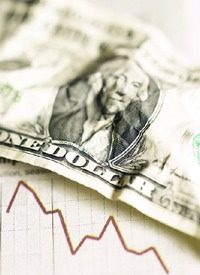
Though data shows that the U.S. economy only shrank at a one-percent annual rate during the second quarter of the 2009 calendar year, according to “preliminary” data released July 31 by the U.S. Commerce Department’s Bureau of Economic Analysis (BEA), that number may be unrealistically low, owing to government involvement in the markets.
“Real gross domestic product — the output of goods and services produced by labor and property located in the United States — decreased at an annual rate of 1.0 percent in the second quarter of 2009,” the BEA stated. That’s a little better than most forecasts. Bloomberg News surveyed 78 economists before the figures were released and found that on average “the economy was forecast to shrink at a 1.5 percent pace.” A Wall Street Journal survey of economists had come to the same number. Another indication of an economic recovery was the report that business inventories shrank during the second quarter, meaning that many businesses will soon have to renew production and create an increase in economic activity.
Although the second quarter number was better than expectations, the BEA figures also coincided with new Commerce Department figures that revised upward the estimates of the contraction that took place earlier in the recession. According to Bloomberg.com, the U.S. economy “contracted 1.9 percent from the fourth quarter of 2007 to the last three months of 2008, compared with the 0.8 percent drop previously on the books, the Commerce Department said today in Washington.”
The Commerce Department also announced that in the first quarter of this year the economy shrank at a sharper rate than previously estimated, though the contraction in the second quarter was much less pronounced, according to Bloomberg.com: “The Commerce Department also reported today that the economy contracted at a 1 percent annual rate from April through June after shrinking at a 6.4 percent pace in the first quarter, the most since 1982. The decline in the first three months of the year was previously reported as 5.5 percent.”
The economic numbers also included negative consumer spending figures. “Consumer spending, which accounts for more than two-thirds of the economy," Bloomberg.com reported, "fell at a 1.2 percent pace, more than forecast, following a 0.6 percent increase in the prior quarter.”
Although most news reports concluded that the reduced rate of shrinkage in GDP was a sign of the recession nearing bottom, there’s some evidence that the reduced rate at which the economy is contracting is actually created by another government-induced economic bubble, which itself is fated to pop in subsequent quarters. The new "bubble" theory considers the ramifications of the Federal Reserve Bank’s under-market interest rates and the government’s increased overall spending. Indeed, the Wall Street Journal noted that one reason the second quarter economic decline wasn’t as steep as it might have been was because “federal government spending gave GDP a boost. It rose 10.9%, after declining 4.3% in the first quarter. State and local government outlays rose 2.4%, after going down 1.5% in the first quarter.” After the borrowed stimulus money is spent and gone, GDP shrinkage could accelerate again.



